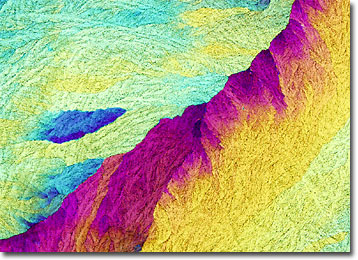Polarized Light Microscopy Digital Image Gallery
Testosterone
Although testosterone was not isolated until 1935, four years after its metabolite androsterone, the basic origins and effects of the substance have been known for a much longer period of time. Indeed, as early as the 1700s, testicular transplant experiments linked castration to the physiological and behavioral changes that are commonly associated with decreased levels of testosterone production in the male body.

Testosterone is the primary male sex hormone, but is also found in women, though in much smaller amounts. An average man, for instance, may contain as many as 1,000 nanograms of testosterone in a deciliter of blood plasma, while a typical female does not usually exhibit more than 60 nanograms of the hormone in the same amount of plasma. The location of testosterone production is also different between the sexes, males producing the substance primarily in the testes and females manufacturing it in the ovaries and adrenal glands. Testosterone can be synthesized in the laboratory as well, in which case it generally occurs as a white crystalline powder that is virtually insoluble in water.
Important in a number of ways, testosterone must be present in a fetus in order for the child to develop male genitalia. Later in life, during puberty, testosterone is responsible for the further development of the male sex organs, the deepening of the voice, and the growth of facial hair. The hormone is also associated with protein synthesis stimulation and increased muscle development. It is for this latter effect of testosterone that steroids similar to the hormone have been utilized as performance-enhancing drugs, especially by athletes. However, an increased awareness of the harmful side effects of steroid usage may have helped stem their popularity in recent years. Medical use of testosterone includes treatments for frigidity, impotence, and certain varieties of breast cancer.
